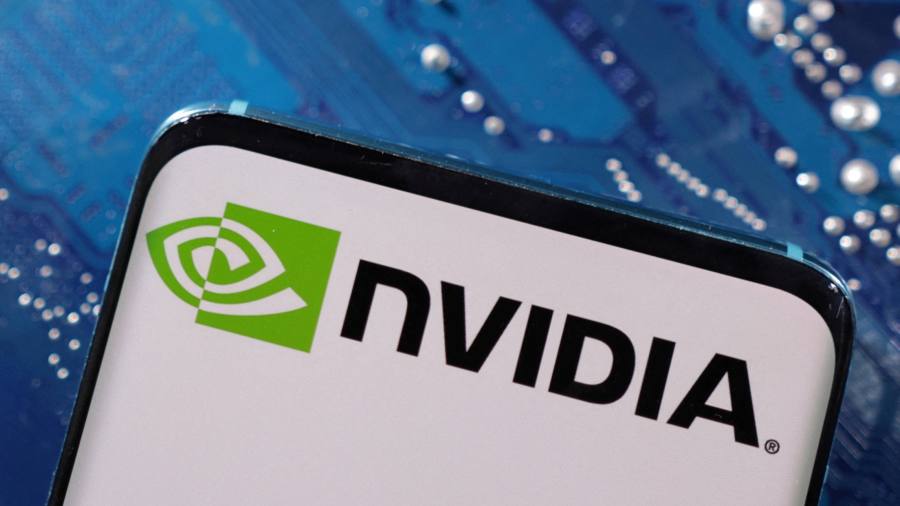Receive free US equities updates
We’ll send you a myFT Daily Digest email rounding up the latest US equities news every morning.
When Michael O’Rourke started describing the biggest technology stocks as the Magnificent Seven in April, the JonesTrading strategist didn’t realise how ubiquitous the nickname would become, dominating market discussion since mid-May when it became widely used.
The group’s recent performance, however, particularly the ultimately flat reaction to chipmaker Nvidia’s stunning earnings this week, suggests it could be time for a less glorious-sounding moniker.
“It seemed fitting when they were responsible for 88 per cent of the market gains — that was a pretty magnificent achievement,” says O’Rourke. “I don’t like talking about seven stocks every day, but they are still what is driving the market.”
So far this year, the combined group — Apple, Microsoft, Google parent Alphabet, Amazon, Tesla, Nvidia and Facebook parent Meta — are responsible for three-quarters of the S&P 500’s gains. It has been a dazzling display. Recently, however, they are not pushing stocks higher.
The Magnificent Seven have lost more than $600bn in market capitalisation over the past four weeks. Granted, that’s only a 6 per cent fall in total and they are still worth a collective $10.8tn. But for the first time this year, they have suffered multi-week falls, even as each reported earnings above expectations.
Given the continuing dominance of the Magnificent Seven, such a pause in their ascent might not necessarily be a bad thing for the overall market, which is down more than 4 per cent over the same four weeks.
The danger is that a large part of the group’s gains this year have come from expanding multiples, where their share prices have been outpacing earnings, leaving them precariously priced for perfection.
Tesla’s share price relative to its estimated earnings has tripled this year to a dizzying 60 times, while Apple trades on a multiple of 27, up from 19 in January. Only Amazon has stayed steady, at an already punchy 35 times. Even Nvidia, supported by its own hefty upgrades to its expected profits, now trades on a multiple of 33, from 30 in January.
Nvidia’s performance this week alone signalled the case for investor caution. After founder Jensen Huang announced figures on Wednesday that blew away already excitable expectations, its shares on Thursday failed to hold an early record high and closed flat on the day.
“Traders react, but investors consider,” said Steve Sosnick, chief strategist at Interactive Brokers. “The knee-jerk reaction was to buy the news even after buying the rumour, but after some time to think it over, investors decided not to chase an already lofty stock much higher.”
That sentiment goes for others too. By its quarterly earnings report early this month, Apple shares had risen by a third since January. Even though its figures beat forecasts, the shares dropped 5 per cent the day amid disappointment that sales of iPhones, Macs and iPads all fell, putting extra pressure on its autumn line-up of new products to deliver. Top-line sales have barely risen in two years.
Microsoft, meanwhile, fell almost 4 per cent following its earnings report late last month as its guidance failed to impress. Such misses are a bigger deal when the stock is valued at 29 times expected earnings compared with when it traded on 22 times in January.
“At these multiples they need real consolidation. A couple of months won’t be enough, they need maybe six to 12 months of that,” said O’Rourke.
If not the somewhat tired-looking seven, the market will need another spur. That may not be easy to find. Overall, this earnings season hasn’t inspired investors. S&P 500 companies managed to beat top-line revenue forecasts by 2 per cent and bottom-line profit bets by 7 per cent, according to Barclays calculations. Yet those who exceeded expectations on both measures only gained 1.2 per cent, according to Credit Suisse, down from an average of 1.7 per cent.
Analysts generally believe the quarter just past should mark the bottom of the earnings cycle for the broader market. But the economic outlook remains cloudy at best. This week data showed soft orders for durable goods from US factories in July and several retailers reported weak earnings. Some investors, though, continue to take comfort from a still-tight labour market. American Airlines’ pilots agreed a 21 per cent instant pay rise on Monday and new weekly unemployment claims fell on Thursday.
“Earnings need to keep up their side of the bargain here,” said Brent Schutte, chief investment officer at the Northwestern Mutual Wealth Management Company. “Most of the market advance this year has been about prices going up, not earnings growing.”
Read the full article here



